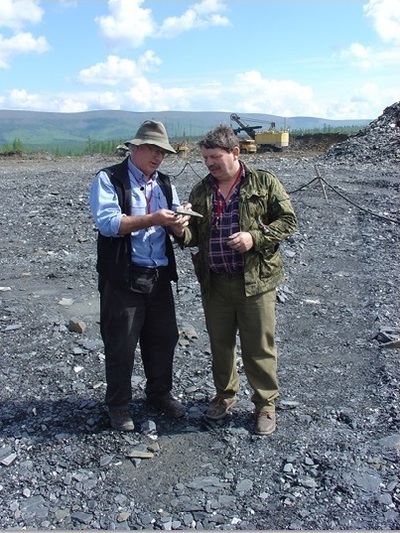What paused evolution?
The first life on Earth developed in the ancient oceans around 3.6 billion years ago but remained little more than a layer of slime for a billion years; it was only 550 million years ago that evolution burst back into action. An international team of researchers has now revealed the ancient conditions that caused these events to occur.
University of Tasmania (UTAS) geologist Professor Ross Large and his Australian, Russian, US and Canadian colleagues have shown that the slowdown in evolution was linked to low levels of oxygen and biologically important elements in the oceans. Writing in the March issue of Earth and Planetary Science Letters, the researchers noted “little is known about trace element trends in the deep time oceans, even though they are critical to developing better models for the … evolutionary pathways of life”.
The discovery was almost stumbled on by accident, as the researchers were “initially looking at oxygen levels in the ancient oceans and atmosphere to understand how mineral deposits form, and where to look for them today”, Professor Large said.
“But the technology we have developed to find minerals can also tell us much about the evolution of life.”

Professor Large and his colleagues looked at thousands of samples of the mineral pyrite in rocks that formed in the ancient oceans. “By measuring the levels of certain trace elements in the pyrite, using a technique developed in our labs, we’ve found that we can tell an accurate story about how much oxygen and nutrients were around billions of years ago,” he said.
After an initial burst of oxygen, the study plots a “flat to declining pattern of many biologically important nutrient elements through the mid- to late-Proterozoic [which] may relate to declining atmosphere O2, and supports previous models of nutrient deficiency inhibiting marine evolution during this period,” the researchers said.
However, they added, these trace elements “rise abruptly toward the end of the Cryogenian marking the position of a second Great Oxidation Event”. Professor Large believes this increase “triggered the ‘Cambrian explosion of life’.”
Professor Large and his team look forward to further use of the technology. “It’s already becoming clear that there have been many fluctuations in trace metal levels over the millennia,” he said, “and these may help us understand a host of events including the emergence of life, fish, plants and dinosaurs, mass extinctions, and the development of seafloor gold and other ore deposits.”
Found: the most massive stellar black hole in the Milky Way
With a mass 33 times that of the Sun, and based a mere 1926 light-years away, Gaia BH3 is the...
Astronauts will soon grow plants on the Moon
When humans take their first steps back on the Moon after 50 years during the Artemis III...
How plant leaves ensure optimal area for photosynthesis
The small RNA molecules in the cells of the growing leaf set in motion a genetic process that...







